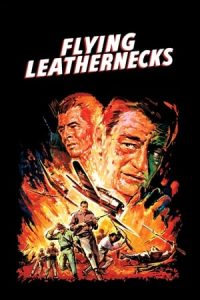- Source: No. 92 Squadron RAF
Number 92 Squadron, also known as No. 92 (East India) Squadron and currently as No. 92 Tactics and Training Squadron, of the Royal Air Force is a test and evaluation squadron based at RAF Waddington, Lincolnshire. It was formed as part of the Royal Flying Corps at London Colney as a fighter squadron on 1 September 1917. It deployed to France in July 1918 and saw action for just four months, until the end of the war. During the conflict it flew both air superiority and direct ground support missions. It was disbanded at Eil on 7 August 1919. Reformed on 10 October 1939,at Tangmere Airfield, the unit was supposed to be equipped with medium bombers but in the spring of 1940 it became one of the first RAF units to receive the Supermarine Spitfire, going on to fight in the Battle of Britain.
Reformed after the war in January 1947, No. 92 (Fighter) Squadron was assigned to RAF Fighter Command flying the Gloster Meteor F.3. Between 1961 and 1962, No. 92 (F) Squadron was the RAF's official aerobatic team, flying 16 Hawker Hunter F.6s known as the Blue Diamonds. In December 1965, the squadron was reassigned to RAF Germany alongside No. 19 (F) Squadron, flying the English Electric Lightning F.2/F.2A and from January 1977, the McDonnell Douglas Phantom FGR.2. Disbanded in July 1991, the Squadron was reformed as No. 92 (Reserve) Squadron at RAF Chivenor flying the British Aerospace Hawk until October 1994. No. 92 Squadron then lay dormant for the next 14 years before being reformed at Royal Air Force College Cranwell on 30 June 2009.
Operational history
= First World War
=No. 92 Squadron was established as part of the Royal Flying Corps at London Colney on 1 September 1917, working up as a scout squadron with Sopwith Pups, SPAD S.VIIs, and Royal Aircraft Factory SE.5as. The Squadron became part of the Royal Air Force on its formation on 1 April 1918. Standardising on SE.5as, the squadron went to France in July 1918, at first operating in the Dunkirk area. It was then moved to Serny in August 1918, where it began scoring victories. During the Somme Offensive of 1918 the squadron was heavily involved, and continued to operate over the Western Front until the Armistice. It was disbanded on 7 August 1919, while stationed at Eil with the Army of Occupation. It had claimed a total of 38 victories during its World War I service. Eight aces had served in the squadron, including Oren Rose,
Thomas Stanley Horry,
William Reed,
Earl Frederick Crabb,
future Air Chief Marshal James Robb,
Evander Shapard,
Herbert Good,
and future Air Marshal Arthur Coningham.
= Second World War
=Following the outbreak of the Second World War, No. 92 Squadron was reformed on 10 October 1939 at RAF Tangmere, West Sussex. Initially it flew Bristol Blenheim Mk.IFs but in March 1940 they were replaced by the Supermarine Spitfire Mk.I, which became operational on 9 May. No. 92 Squadron first saw action over the Dunkirk evacuation beaches flying from RAF Croydon. During the latter stages of the Battle of Britain No. 92 Squadron flew from RAF Biggin Hill.
In February 1942, the Squadron was posted to Egypt to join Air Headquarters Western Desert to support the Allies on the ground. Personnel arrived in Egypt in April but no aircraft were available. Some pilots flew operations with Hawker Hurricanes of No. 80 Squadron. Spitfires finally arrived in August and the squadron commenced operations from RAF Heliopolis over the El Alamein sector, and then with their Spitfire Vs at Landing Ground 173 in the Western Desert. No. 92 Squadron provided air cover at the Battle of El Alamein and on 18 April 1943, 11 Spitfires from the squadron flew top cover at the Palm Sunday Massacre during which approximately 75 axis aircraft were disabled or destroyed. Following the Allied victory in North Africa, the Squadron moved to Malta in June. It went on to provide air cover for the 8th Army during the campaigns in Sicily and Italy, arriving on Italian soil on 14 September 1943. No. 92 Squadron then followed the armies up the Italian coast as part of No. 244 Wing and No. 211 (Offensive Fighter) Group. During World War II the Squadron claimed the highest number of victories scored, 317, in the RAF.
= Cold War
=Following the cessation of hostilities, No. 92 Squadron was disbanded at Zeltweg in Austria on 30 December 1946. No. 91 Squadron was disbanded on 31 January 1947 at RAF Acklington and re-numbered as No. 92 (Fighter) Squadron as part of RAF Fighter Command with the Gloster Meteor F.3. The Squadron relocated to RAF Duxford on 15 February 1947 before moving onto RAF Linton-on-Ouse in October 1949. It went on a goodwill tour of Scandinavia in 1949. Subsequently, equipped with the Meteor F.8, it received the Canadair Sabre F.4 in February 1954, becoming part of the only Sabre wing in Fighter Command alongside No. 66 Squadron, before getting the Hawker Hunter F.4 in April 1956 while based at RAF Linton-on-Ouse. Throughout this period, No. 92 (F) Squadron was also based at RAF Middleton St. George, RAF Thornaby and RAF Leconfield.
In 1961, No. 92 (F) Squadron, under the command of Sqn. Ldr. Brian Mercer, was chosen as Fighter Command's official aerobatic squadron – the RAF Aerobatic Display Team, taking over from "Treble One"'s Black Arrows. Originally forming in 1960, the team was initially called the Falcons before later adopting the name the Blue Diamonds under which they operated 16 bright blue painted Hawker Hunter F.6s. No. 92 (F) Squadron thrilled the crowds with its precision display including looping a formation of 18 aircraft, only four fewer than the world record 22 Hawker Hunters looped by the Black Arrows of No. 111 (F) Squadron at the Farnborough Airshow in September 1958. When they re-equipped with the English Electric Lightning F.2 from April 1963 onward they continued to perform with these.
In December 1965, along with No. 19 (F) Squadron they were reallocated to RAF Germany initially at RAF Geilenkirchen, moving to join No. 19 (F) Squadron at RAF Gütersloh. They remained at RAF Gütersloh from January 1968 until the Squadron disbanded on 31 March 1977.
In January 1977, No. 92 (Designate) Squadron had begun training as a McDonnell Douglas Phantom FGR.2 air defence unit at RAF Wildenrath and on 1 April this unit formally adopted the No. 92 (F) numberplate.
On 25 May 1982, RAF Phantom XV422 of 92 Sqn shot down RAF Jaguar XX963 of 14 Sqn from RAF Bruggen with a Sidewinder, over Germany, by mistake when the Phantom pilot did not realise that he was fully armed.
On 17 August 1990, Phantoms from No. 92 (F) Squadron and No. 19 (F) Squadron were sent to RAF Akrotiri, Cyprus, to provide air defence due to the deployment of No. V (AC) Squadron and No. 29 (F) Squadron from Akrotiri to Dhahran Airfield after the Iraqi Invasion of Kuwait. Due to the rundown of RAF Germany following the fall of the Berlin Wall the Squadron disbanded on 1 July 1991.
= Hawks to the Air Warfare Centre
=On 23 September 1992, No. 151 (Reserve) Squadron was renumbered No. 92 (Reserve) Squadron at RAF Chivenor as part of No. 7 Flying Training School (FTS) for weapons training, flying the British Aerospace Hawk T.1. With the transfer of No. 7 FTS weapons training role to No. 4 FTS at RAF Valley, No. 92 (R) Squadron was disbanded on 1 October 1994.
In November 2008, it was announced that the Tactics and Training Wing of the Air Warfare Centre was to become No. 92 (Reserve) Tactics and Training Squadron. The Squadron officially stood up after 14 years on 30 June 2009 at the College Hall at RAFC Cranwell. On 1 February 2018, the Royal Air Force rescinded all (Reserve) nameplates changing No. 92 (Reserve) Tactics and Training Squadron to No. 92 Tactics and Training Squadron. As part of their work at the Air Warfare Centre, No. 92 Squadron helped design and carry out Exercise Cobra Warrior 2019 for units of the RAF, Luftwaffe, Italian and Israeli Air Forces.
Aircraft operated
Aircraft operated include:
Aces
Robert Stanford Tuck 27 enemy aircraft destroyed, two shared destroyed, six probably destroyed, six damaged and one shared damaged
Donald Ernest Kingaby 21 kills plus two shared kills, six probable kills and 11 damaged - 14½ of his kills came against the Messerschmitt Bf 109
Allan Wright 11 kills three shared kills, five probable kills and seven damaged
Ronnie Fokes nine kills, four shared kills, two unconfirmed kills, three probables, one damaged and one shared damaged
Brian Kingcome eight kills and 3 shared destroyed, one 1 shared unconfirmed, five probables, 13 damaged
John Fraser Drummond eight kills, one shared kill, three probables and four damaged
Tony Bartley eight kills with 92 squadron, 12 confirmed kills during WW2, plus one unconfirmed destroyed, five 'probables' and eight damaged
Adolf Pietrasiak Polish Air Force (P.A.F.) 8 1/10 enemy aircraft destroyed, 2/5 damaged.
Honours
In 1950 the Battle of Britain class steam locomotive No. 34081 was named "92 Squadron". This locomotive was saved from the scrapyard in 1976 and is now owned and operated by The Battle of Britain Locomotive Society and having been based on the North Norfolk Railway in recent years, has returned to the Nene Valley Railway – where it was originally restored – pending a major overhaul and a return to traffic following the expiration of its boiler ticket in mid-2008. The locomotive returned to steam again in December 2016.
See also
List of RAF squadrons
References
Bibliography
External links
Official History on RAF website
RAFWeb.org
John Fraser Drummond: 92 Squadron and the Battle of Britain
MK1 Spitfires flown by No. 92 Squadron at cambridgemilitaryhistory.com weblog
A Cobra in the Sky – The History of 92 Squadron Royal Air Force
The Battle Of Britain Locomotive Society, locomative named after No. 92 Squadron
92 Squadron in Pictures
Kata Kunci Pencarian:
- Pesawat pengebom V
- Bristol Blenheim
- Bandar Udara Croydon
- Bristol Beaufighter
- De Havilland Fox Moth
- Leonard Cheshire
- Consolidated B-24 Liberator
- McDonnell Douglas F-15E Strike Eagle
- Bristol Freighter
- VP-26
- No. 92 Squadron RAF
- RAF Chivenor
- List of RAF squadron codes
- List of Royal Air Force aircraft squadrons
- No. 19 Squadron RAF
- Black Arrows
- 92 Squadron
- List of accidents and incidents involving the English Electric Lightning
- No. 303 Squadron RAF
- No. 31 Squadron RAF
It Ends with Us (2024)
Bird Box (2018)
No More Posts Available.
No more pages to load.











